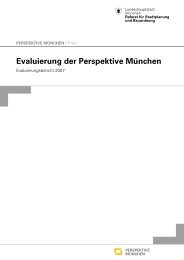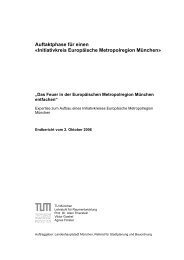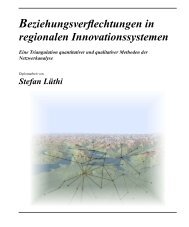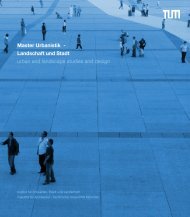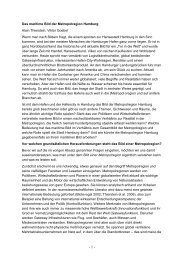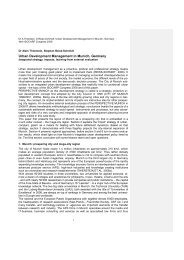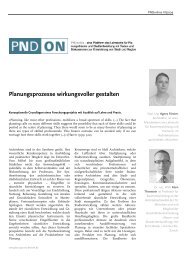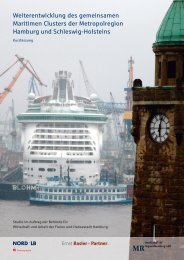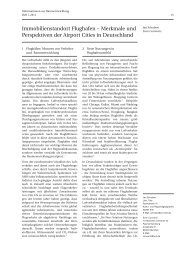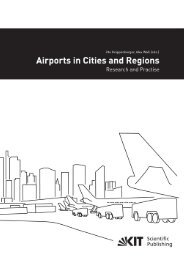0.6-1-Cover and Table of Contents-pp 0-05.indd - Raumentwicklung ...
0.6-1-Cover and Table of Contents-pp 0-05.indd - Raumentwicklung ...
0.6-1-Cover and Table of Contents-pp 0-05.indd - Raumentwicklung ...
You also want an ePaper? Increase the reach of your titles
YUMPU automatically turns print PDFs into web optimized ePapers that Google loves.
The Role <strong>of</strong> the Design Studio in Shaping an Architectural Education for Sustainable Development:<br />
The Case <strong>of</strong> Beirut Arab University<br />
KHALID S. AL-HAGLA<br />
the design proposal regarding its sustainability<br />
aspects, <strong>and</strong> the other one concerns discussing<br />
design proposal with specialists regarding any<br />
<strong>of</strong> the aspects <strong>of</strong> sustainability. Finally, the last<br />
part asks about evaluation as a final part <strong>of</strong> the<br />
educational process.<br />
Results <strong>and</strong> Discussion<br />
This part <strong>of</strong> the study follows a methodology<br />
that correlates the numerical findings <strong>of</strong> the<br />
questionnaire to the respondents’ comments. It<br />
interprets the questionnaire findings horizontally<br />
<strong>and</strong> vertically, as it links between the three<br />
levels <strong>of</strong> the study in addition to comparing<br />
different aspects at the same level. However,<br />
the general reading <strong>of</strong> the questionnaire’s<br />
findings shows the high score <strong>of</strong> the fourth level<br />
respondents towards almost all <strong>of</strong> the asked<br />
questions compared with those <strong>of</strong> the third <strong>and</strong><br />
fifth levels; this reflects the importance given to<br />
promoting the underst<strong>and</strong>ing <strong>of</strong> sustainability in<br />
the design studio. Another important note is that<br />
<strong>Table</strong> 2: Findings <strong>of</strong> the questionnaire regarding sustainability dimensions. (Source: Author).<br />
the respondents were interested in answering<br />
the questionnaire, <strong>and</strong> their feedback shows<br />
a positive attitude towards the educational<br />
process. One respondent in the third level<br />
comments that “…I encourage such researches<br />
<strong>and</strong> questionnaires in order to have scientific<br />
records <strong>of</strong> the critical problems according to<br />
sustainability relative to architecture.”<br />
Sustainability dimensions<br />
The findings <strong>of</strong> the questionnaire show the<br />
unbalanced importance given to different<br />
sustainability dimensions. The environmental<br />
dimension scores the highest compared with<br />
both social (the second) <strong>and</strong> economic (the<br />
third). This is consistent through all study levels<br />
<strong>and</strong> all architectural studio-related elements -<br />
the previously studied courses, the guidance<br />
presented at the studio, <strong>and</strong> the design<br />
proposal (see table 2). The respondents’<br />
comments cover these areas <strong>and</strong> point to<br />
evaluation as another important aspect. The<br />
comments come to show the need for more<br />
Archnet-IJAR, International Journal <strong>of</strong> Architectural Research - Volume 6 - Issue 1 - March 2012<br />
33



